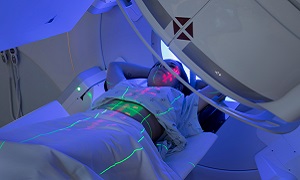Glioblastoma
Glioblastoma is an aggressive tumor occurring in the brain or the spinal cord. It forms from astrocytes (star-shaped cells) that support the nerve cells. Although this type of cancer can occur to people of any age, it is more common in elderly people. Another name for the disease is Glioblastoma multiforme. This malignant brain tumor spreads fast and grows quickly. This cancer begins in the cerebrum, which is the largest part of the brain, in adults. The tumor makes its own blood supply which helps in its growth. It easily invades the normal tissues of the brain. One may observe a slight male predilection.
Types of Glioblastoma
Glioblastoma is of two types. They are:
- Primary Glioblastoma: It is the more common type and the most aggressive form of Glioblastoma.
- Secondary Glioblastoma: It grows slowly and is less common. It begins from a less aggressive astrocytoma. Affecting nearly 10 % of people, most of the affected people are under the age of 45 years.
Causes of Glioblastoma
The exact cause of Glioblastoma is still unknown. Similar to other cancers, it begins when there is an uncontrolled growth of the cells and leads to tumors. However, this cell growth relates to the changes in the genes of your body.
Symptoms of Glioblastoma
When Glioblastoma presses on the parts of your brain, it may give rise to symptoms. You won’t have any symptoms if the tumor isn’t very large. The location of the tumor within your brain is largely responsible for determining the type of symptoms that you will face. These symptoms can be:
- Nausea
- Memory loss
- Muscle weakness
- Headache
- Weakness on a side of your body
- Mood changes
- Double vision
- Seizures
- Sleepiness
- Problems with speech
- Vomiting
- Personality changes
- Loss of appetite
- Blurred vision
Diagnosis of Glioblastoma
Neurological examination
During neurological examination, your doctor will ask you about the signs and symptoms during the neurological examination. He or she may inspect your hearing, coordination, reflexes, vision, balance and strength. If you are having problems in any of these, then it will reveal the part of your brain affected by the tumor.
Imaging tests
Imaging tests will help your doctor to determine the size and location of the tumor within your brain. He or she may use MRI (Magnetic Resonance Imaging), CT (Computerized Tomography) scans, and PET (Positron Emission Tomography) to diagnose the tumor.
Biopsy
Biopsy involves the removal of a sample of tissue for testing. Your doctor will use a needle to remove a part of Glioblastoma, depending on its location. He or she will send this sample to the laboratory for analysis to find the type of cells and how much aggressive they are. These specialized tests will help your doctor to determine the types of mutations with these cells.
Treatment options for Glioblastoma
Surgery
Radiotherapy
Chemotherapy
It can be of great help. The doctors mostly use chemotherapy drugs like Temozolomide, carmustine and lomustine.
Targeted drug therapy
Wafer therapy
Convection-enhanced delivery (CED)
Nanoparticle therapy
Palliative care
Supportive care is important for anyone suffering from a tumor or a type of cancer. It including taking care of everything and help you deal with the disease in a better way. It also helps to deal with the other symptoms of Glioblastoma. Ultimately, it improves the quality of life that you are spending.








